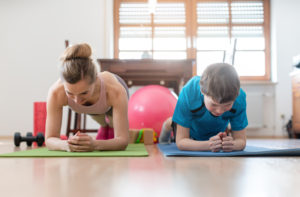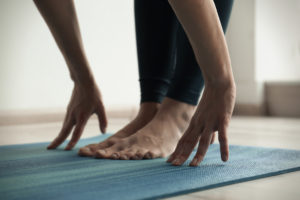By Iris Farrou
31 May, 2023
Lifestyle Tips, Prevention, Women's Health
Any My Doctor about Arthritis, Arthritis, Autoimmune, exercise, Genetic Disorder, Gout, Home Remedies for Arthritis, Joint Pain, Pain, Protect My Joints, Reactive Arthritis, Redness, Risk Factors, Stiffness, Swelling, When should I see my OBGYN for Arthritis

Among the many ailments that affect more women than men is none other than arthritis. There are several types of arthritis, with the most common being osteoarthritis, rheumatoid arthritis, and gout. Arthritis is known to get worse with age, and some of the prevalent symptoms can include pain, stiffness, swelling, and decreased range of motion– specifically targeting the joints. If you have a family history of arthritis, then it is never too soon to start taking precautions. There may not be a way to fully prevent arthritis yet, but there are several preventative measures and ways to minimize its impact on your day to day life.
What are the risk factors?
As with many conditions, if you have a family history of arthritis–mainly your parents and siblings–you are more likely to develop it yourself. For other types of arthritis, age can be a significant risk factor; the older you get, the more your chances of developing it are. Additionally, women are more likely to develop rheumatoid arthritis while men are at a higher risk of developing gout.
If you have previously injured a joint, the likelihood of getting arthritis at that particular joint increases. Similarly, if you carry extra weight you are at a higher arthritis risk as you put stress on your joints.
How do I manage arthritis?
Your doctor may have already prescribed you medication to help with the effects of arthritis, or suggested other techniques of dealing with it. The CDC has a list of 5 steps to help you manage arthritis–they call it the “Strive for Five.”
- New Self-Management Skills: learning strategies to help manage your arthritis can help you feel more in control of your own health, better equip you to manage pain and other symptoms, reduce stress and improve your mood, as well as plan and complete activities you value.
- Be Active: regular exercise and physical activity can help you manage the pain that comes with arthritis, as well as improve your overall quality of life and health. You should strive for about 150 minutes of exercise per week if you have arthritis, specifically of moderate-intensity. Of course, change your activity plan based on what your health allows and on your arthritis symptoms.
- Talk to Your Doctor: as is the case with any condition, general advice only goes so far. You should be openly communicating with your doctor about your symptoms, and be in regular contact with your healthcare provider with regards to your arthritis treatment plan.
- Manage your Weight: removing excess weight from your body will lessen the stress that you put on your joints, thus helping the joint pain associated with arthritis. It will also help you improve physical function.
Protect your Joints: joint injuries can cause or worsen arthritis. Try to engage in joint-safe activities that don’t put too much stress on your joints and are relatively injury-safe.
More

More and more people are working from home right now, as some office jobs are even moving employees to permanent remote positions. While you may not realize it, you move around less when you work from home, decreasing your daily number of steps. The walk from the car, through the office, around your desk, to the work shared kitchen, etc. all add to your daily steps. This means, you need to get more accustomed to finding ways to increase your step count and daily exercising activity, which could mean finding time to exercise two or more times per day.
Adults should reach 150 minutes of moderate activity each week, which breaks down to 30 minutes five days a week. However, with daily steps down for those who are working from home, it may be beneficial to consider ways to increase your activity throughout the day.
As little as 15 minutes of cardiovascular exercise increases brain connectivity and efficiency. This means, if you are working from home, you can boost your overall efficiency of work after a short walk! Sitting at a computer all day is not healthy (for your body, brain, or eyes) for prolonged periods. Setting a goal for a short 15-minute walk twice daily is an ideal way to give your mind and body a break, while also boosting your mood through the endorphins that are produced by exercise.
Are your kids home for summer or doing e-learning right now? If so, include them in your twice daily exercise breaks. Shorts exercise sessions have all the same benefits for children, giving their mind, body, and eyes a break from sitting and looking a screen. One good way of keeping track is to link the family’s phone calendar and set reminders. This way, twice a day, your phone will alert every when it’s time to meet by the front door to go!
While walking is the easiest way to get moving, you don’t need to stop there. Mix up the routine with other types of exercising. Cycling, yoga, stretching, and weight training are all ways to get the family involved with little space or set up. Many families already have bikes, so planning 15-minute neighborhood rides, while the weather is nice, is ideal. Additionally, consider ordering some free weights and gym mats to set up a small workout area in an under-used living room, garage, or basement.
Whether or not you have done yoga before, it is a great way to give the thinking mind a break. Yoga revolves around focusing on deep breathing, while performing stretches. Because your brain focuses on your breath, it truly gives the thinking/worrying/work-focusing parts of your mind a break. Additionally, yoga stretches help counter act the negative impacts of sitting at a desk in front of a screen. There are many yoga videos available on YouTube, but you could also subscribe to virtual classes from a local yoga studio for a more personalized approach.
While a 30-minute evening walk might have been enough for the hustle and bustle of busy daily life pre-pandemic, it’s best to find ways to integrate shorter exercise breaks throughout the day for parents and kids working and learning from home.
More
 After what felt like a never-ending winter, Buffalo has enjoyed beautiful weather so far this summer! Outdoor activities with family and friends are a safe way to adhere to social distancing, while exploring the most scenic sites in Buffalo. The region has countless hiking trails and many beautiful creeks. Additionally, Western New York is home to some incredible wildlife, including deer, foxes, hawks, and bald eagles.
After what felt like a never-ending winter, Buffalo has enjoyed beautiful weather so far this summer! Outdoor activities with family and friends are a safe way to adhere to social distancing, while exploring the most scenic sites in Buffalo. The region has countless hiking trails and many beautiful creeks. Additionally, Western New York is home to some incredible wildlife, including deer, foxes, hawks, and bald eagles.
Here is our list of the best nature-related day trips within an hour’s drive from Buffalo.
- Chestnut Ridge Park
One of Erie County’s best attributes, Chestnut Ridge Park is located about a half hour outside of Buffalo—just past Orchard Park. This huge park offers beautiful scenery for hiking, biking, or even driving. The park includes picnic areas and tennis courts.
- Eternal Flame Falls at Chestnut Ridge Park
This interesting natural phenomenon is tucked away off the beat and path in Chestnut Ridge Park. The waterfall contains a natural gas spring with a flame that can reach four to eight inches. The best time to see the falls at full water capacity is during the spring, after plenty of rain. However, the half-mile hike is scenic and can also be an enjoyable outing in the dry season.
- Tifft Nature Preserve
This urban-adjacent gem is located only five minutes from downtown Buffalo on the Outer Harbor. Tifft is a massive 264-acre preserve with five miles of trails and boardwalks. The facilities offer fishing and guided tours. Additionally, Tifft is an ideal spot for photographers, as it’s designated as an ‘important bird area’ by the Audubon Society. Many at-risk species, including bald eagles, red-shouldered hawks, and short-eared owls can be found among the 265 bird species at the preserve.
- Eighteen Mile Creek
If you are looking for a less urban/more remote option, check out Eighteen Mile Creek in Hamburg. This 466-acre undeveloped park offers vast hiking trails with fishing and wildlife viewing. Parking near South Creek Road leads to a trailhead that continues along the rim of the creek for about five miles.
- Reinstein Woods Nature Preserve
Located in the suburb of Depew, this unique 292-acre complex offers lush forests, ponds, and wetlands. Popular walking trails include the Lily Pond Loop where visitors can see ducks, geese, turtles and other aquatic wildlife, and the Beech Tree Trail that takes visitors through a beech-maple forest. Many native species of wildlife to Western New York, including white-tailed deer, beavers, waterfowl, red-tailed hawks, pileated woodpeckers and blue herons, can be found here.
- Knox Farm State Park
Those looking for more than just hiking and fishing, should check out the biking and equestrian trails at Knox. This state park occupies the former estate of the Knox family near the idyllic village of East Aurora.
More
Many women look into bettering their overall health when they plan a pregnancy, but good habits should start with a healthy conception. In addition to regular doctor’s exams and other medical advice, diet and exercise can help with conception and help support a healthy pregnancy.
Exercise
Although heavy or extreme exercise should be avoided during pregnancy, there is nothing to prevent you from preparing your body for a healthy pregnancy. Implementing regular exercise into your schedule will not only help you increase your stamina for labor and delivery, but it can also improve your fertility (especially if have polycystic ovarian syndrome that can lead to trouble conceiving). There is no need to wait until you are pregnant to start exercising, as making it a habit is guaranteed to also help you lose the baby weight faster!
A variety of physical exercises can be done to spice up your routine but remember that during a pregnancy you need your back and abdominal muscles to be stronger in order to help you with the increasing weight in your tummy area, as well as the swelling of your breasts. As such, you may want to focus on exercises that strengthen your core and will eliminate the pain most women experience during pregnancy. It is also suggested that you do cardio to keep your heart rate up and stay in good physical and mental health before, during, and after your pregnancy.
Diet
Diet and exercise go hand in hand, so here are some tips on what foods you can add to your diet to help you support your fertility:
- Eat foods rich in antioxidants, as those have been proven to improve fertility in both men and women. These foods include fruits, vegetables, nuts, and grains.
- Choose a bigger breakfast, which can help both balance your diet and improve the hormonal effects of polycystic ovarian syndrome—a major cause of infertility.
- Add fiber to your diet though fruits and veggies, whole grains, and beans. Fiber generally helps remove excess estrogen, though studies on its exact advantages are not yet conclusive.
- Get your protein from vegetables! Swapping meat protein with veggies has been known to protect against infertility.
In addition to adding those foods, you should avoid the following:
- Minimize trans fats that can be found in processed and fast foods.
- Cut down on caffeine, especially if you drink more than 500 ml in a day. Low to moderate caffeine consumption should not interfere with fertility.
- Reduce refined carbs: sugary foods and drinks, as well as processed grains increase your blood sugar and insulin levels and have been associated with the risk of ovulatory infertility.
- Avoid alcohol, especially during the pregnancy! When you are still trying to get pregnant, moderate amounts of alcohol should not harm your fertility, but excess is to be avoided.
More

With the roaring 2020s just around the corner, it’s time to think about facing the new year with less stress. Most likely, some of your new year’s resolutions include taking better care of your body and maintaining your well-being. A lot of people manage stress, anxiety, and day-to-day challenges through exercise, and yoga is one form of exercise that gains more and more popularity—especially since it can be done either in a studio or at home, with company or individually.
Yoga can help with a variety of health issues, and different yoga poses are known to help heal different pains, whether those are physical or emotional.
Stress Relief
Like many forms of exercise, yoga can help ease day-to-day stress and contribute to a more relaxed state of being. It helps us bring our attention back to our bodies and focuses the mind and breath on what parts of it are experiencing tension and pain.
- Forward fold/bend: A forward fold essentially looks like bending over to touch your toes. This pose helps the body release tension so that you are better prepared to relax. It also allows the upper back to stretch and release tightness in the neck and shoulders.
- Standing forward fold with shoulder opener: This pose looks the same as a forward fold, but also incorporates your arms stretched behind you in an upward pull. In addition to increasing exhalation, shoulder openers help the body concentrate on the pose and reduce stressful thoughts. This pose helps release shoulder tension and relax the hamstrings.
- Side stretch: A relatively easy pose, a side stretch can be done on both sides of the body, helping to release the neck, head, and shoulders muscle tension.
Balancing Emotions
Just as it helps relieve stress, yoga can help us process our emotions and let go of emotional tensions we have been holding in our bodies.
- Tree pose: With a firm stance on the ground, this pose is accomplished by lifting and placing your foot either on your inner thigh or calf (being careful to avoid the knee area). Intended to stretch your upper body, while you raise your hands above your head and breathe into your heart space. The purpose is to ground yourself and embody the stability that comes with situating your roots into the earth.
- Warrior II: With the tree pose having brought attention to your heart space, the warrior II helps you realize the extent of your inner power that comes from your heart space. Drawing 20 to 25 breaths in this pose, you can focus on drawing strength and confidence into yourself.
Dealing with Pain
A combination of gentle yoga poses with conscious breathing techniques can help augment relaxation response, especially if used in restorative yoga which is meant to help heal deeper pain and allow the body to experience a pose for a longer period of time.
- Nesting pose: To find this pose, lay on your side, legs bent and drawn in toward your belly. This pose is recommended if you have trouble sleeping or are suffering from insomnia, as it creates a sense of security and nurturing. Focus on the natural rhythm of your breath, observing how the breaths move in and out of your body, creating a secure pattern.
- Supported backbend pose: This heart-opening pose is done by laying on your back with your legs bent. The key is to put a bolster under your upper back to releases chronic tension in the back and shoulders, working to undo the stress placed on our bodies from working at a desk, a computer, or driving. It improves the flow of the breath from the upper chest to the heart and rib cage, down to the belly.
- Seated forward fold: Done in a seating position, it’s best to use a bolster to let your upper body meltdown as you reach for your feet. According to the information given by QC Kinetix (Bradenton), our daily activities place a lot of stress and pain on the spine, not only on the shoulders and neck. This pose helps relax the hips and the back allowing it, as well as your chest and belly, to expand and contract with each breath you take.
While this list is far from exhaustive, it’s meant to provide a basic understanding of the benefits of yoga. The best way to get involved is to seek out a local class or begin practices the fundamentals of yoga (basic poses, like the ones above) through videos online.
More





